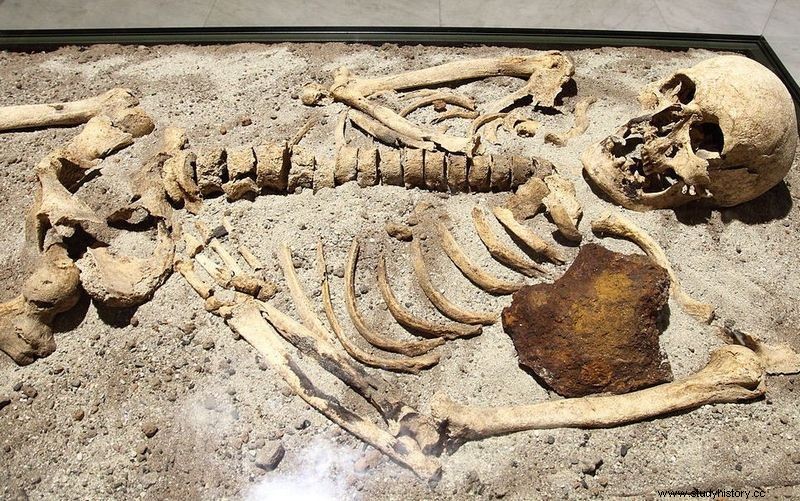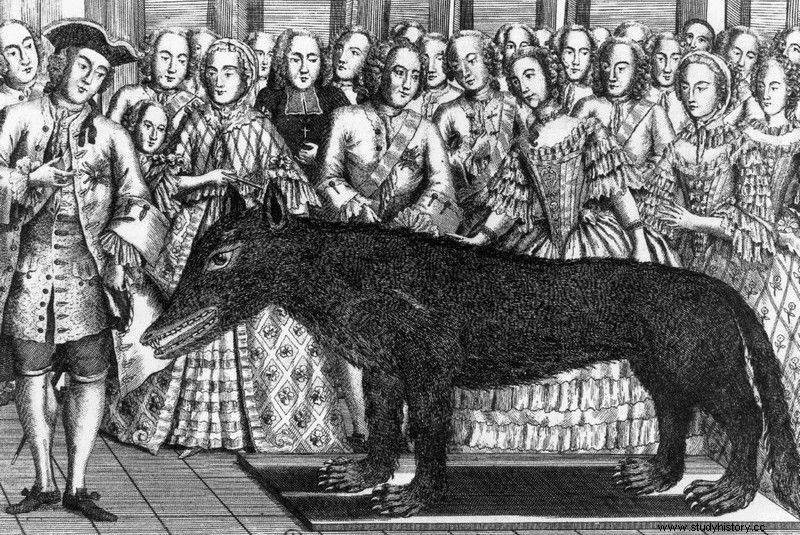The Death Star was invented as early as the 19th century. The witchers really defended the Polish villages against monsters. Dracula was actually immersed in blood. What other characters from fairy tales and fantasy novels can you find ... in history books?
As always, all TOP10 items are based on the articles we publish. This time we prove that fiction often draws from real events. You can find more historical controversies HERE.
10. Zombies aren't just a fancy of Hollywood writers

Benin water altar. Perhaps zombies come from this African country (photo:Dominik Schwarz, license CC BY-SA 3.0).
The idea of a dead man with superhuman strength is the result of a synthesis of African beliefs, European black magic and local cults in Haiti. She came to Central America with slaves from the Black Continent. The origin of the word "zombie" can be found in many terms. In the Congo Basin, "nsumbi" or demons are sometimes mentioned. In turn, in the area of today's Angola, the body without a soul was referred to as "nvumbi".
In the Caribbean, the belief that zombies exist is still alive. It is believed that a man can arise from the tomb and his body be taken over by a sorcerer and used for evil purposes (read more on this topic).
9. Witchers really existed and they knew their job

Real witchers could look something like this ... (source:public domain).
There is a monster prowling around? Our ancestors had people for it. There is a story about a watchman from Biała who defeated the phantom with ... a needle and thread. The unknown by name of the Shepherd from Chernostov, active at the end of the 19th century, used more brutal methods. For a fee, he agreed to spend the night in the haunted house. Witnesses could hear groans and fighting sounds coming from inside. Before World War I, the Podkarpacie region could also feel safe - the inhabitants were watched over by the so-called guardians, professional ghost tamers (read more on this topic).
8. The Caribbean Death Star was also exploded

Haitian death star pictured aboard an X-wing… pfu !, a US military fighter jet.
After Napoleon's troops were successfully driven to Haiti, the rebellious slaves feared the oppressors' return. Their leader, Henri Christophe, commissioned the erection of a huge fortress in 1805. "As you see a star in the sky [...], so the citadel symbolizes our highest ideals," Haitian revolutionaries were to say.
Christophe felt the power within himself, but rather the dark side of it. In 1811 he was crowned king and as Impera ... King Henry I forced his subjects to slave labor to build his dream building. When it was almost finished, an explosion in the gunpowder magazine ruined many years of work. Was it an attack or an accident? (read more about it).
7. Vampires were still feared in the 20th century

800-year-old vampire burial from Bulgaria (photo:Bin im Garten; license CC BY-SA 3.0).
Literature and cinema have taught us that the most reliable remedies for vampires are the cross, the ax, the stake, and the silver bullet. In reality, however, less sophisticated methods were used. In a 13th-century tomb discovered in Bulgaria, there is a man's body pierced through with an iron rod taken out of a plow . One hundred years earlier, fourteen young people were buried in the Czech Republic, their bodies nailed and covered with a pile of stones. In the 18th century, a body with legs severed in a coffin reinforced with iron was discovered under the presbytery floor. It is also possible to find vampire burials from ... the 20th century (read more on this topic).
6. Merlin was real and had an obscene name

Illumination from the 15th-century edition of "The History of the Kings of Britain" (source:public domain).
From the 11th century onwards, stories about heroes called mabinogion circulated in the areas inhabited by the Celts. . One of the popular characters in these stories was the 6th century bard Myrrdin Wyllt. It was he who became one of the main inspirations of Merlin's character. It was created by the 12th century Welsh chronicler and bishop Geoffrey of Monmouth, writing "Merlin's Prophecies" (1134), "The History of the Kings of Britain" (1138) and "The Life of Merlin" (1138). Why did he change Myrrdin's name? He had to do this in order not to offend his readers (read more on this).
5. Maria Leszczyńska kept a stuffed werewolf in her salons

A French court watching a stuffed beast (source:public domain).
In the summer of 1764, a beast from hell began to roam around Gevaudan, France. Her first victim was a young girl, then a group of children. Fear reigned in the region. It was supposed that the perpetrator was a wolf, a group of wolves or… a werewolf. Reinforcements were sent from Paris, including those of François Antoine, the great hunter of King Louis XV.
The hunt has begun. Soon Antoine shot a huge wolf in whose guts fragments of red cloth were found . This, along with the unusual size of the animal, was considered sufficient evidence of the crime. The beast was stuffed and sent to Paris, where it ended up in Queen Maria Leszczyńska's anti-chambers (read more about this).
4. Vlad III the Impaler became the model for Dracula for a reason

Even Sultan Mehmed II was afraid of the Lord III Dracula.
In the spring of 1462, Turkish troops led by Mehmed II entered Wallachia to deal with its hospodar. As they approached the city of Tîrgoviște, they saw a scene straight from the most brutal horror films. Along the road leading to the capital there was a "pile forest" on which human bodies had been studded. Turkish soldiers captured a year ago were recognized in the unfortunates hanging from sharpened trunks. As one of the Sultan's chroniclers noted, a total of 20,000 people were stuck on stakes. A kilometer wide strip of unfortunates stretched three kilometers long (read more on this).
3. Android won with Katarzyna the Great in chess

Kard from the movie "Le Joueur d'échec", which tells the story of a chess match between Catherine II and "The Turk".
In the 19th century, a story circulated in the press about an automaton created by the Hungarian constructor Wolfgang von Kempelen. The machine called the "Turk" looked like a man sitting at a desk and was said to be unbeatable in a chess game. The fame of the automaton-chess player spread throughout the country. The ruler of Russia wanted to test the machine herself - and suffered a disastrous defeat. As it turned out, this story was not completely sucked out - the "Turk" did exist. Only that most likely ... a man was hiding inside, a Polish officer (read more about this).
2. Baba Yaga still prowled the streets of Barcelona in the 20th century

The kids living in Barcelona really had something to fear.
She tempted children with sweets, then kidnapped them to her home, where she fed them with dry bread, abused and eventually killed. In her "hut" were found bones hidden behind a wall, clay jugs filled with blood, lard made of human fat, children's hair, and old recipe books. This is not the heroine of one of the Brothers Grimm fairy tales - we're talking about Enriquet Martí and Ripollés, known as the "vampire of Barcelona". The modern day Baba Yaga created ghostly drugs and sold them to the richest and most influential people in Spain (read more on this topic).
1. Our grandparents had their own ways to deal with zombies

Antoine Wiertz, "Buried Żywiec", 1854 (source:public domain).
How to prevent one of the dead from rising from the grave as the so-called striga? Our ancestors defended themselves in various ways. The suspect corpse (for example, lame or without eyebrows) was placed on its stomach "so that it would bite into the ground." There were also traps - a sickle was placed under the neck of the deceased so that he could cut off his own head when trying to get out of the coffin. The zombie-striga was believed back in the 18th century (read more on that).
